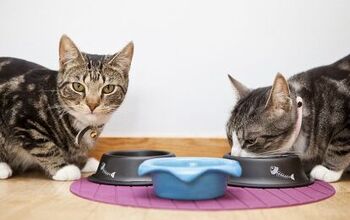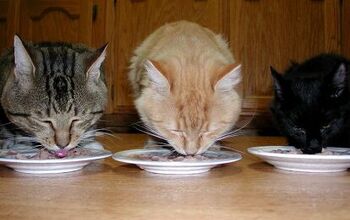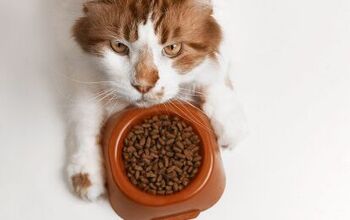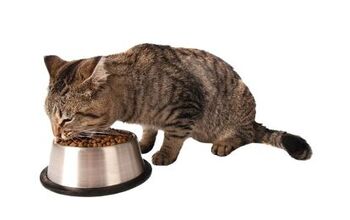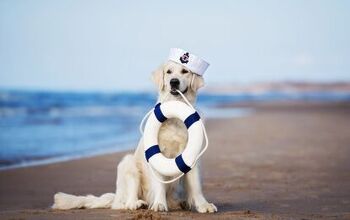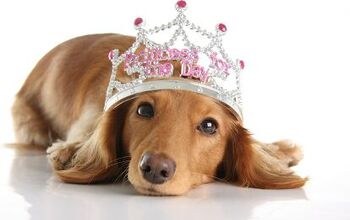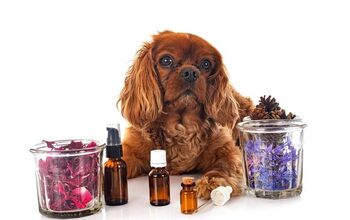How To Read A Cat Food Label

Any good holistic veterinarian or pet nutritionist will tell you that your cat’s health begins with the food you’re feeding her. Hippocrates once said, “Let food be thy medicine and medicine be thy food,” and holistic practitioners still hold to that philosophy. After all, the nutrients that you feed your body are what allow it to grow strong and thrive against pathogens and disease, and the same holds true for your feline friend. In other words, to prevent and treat disease, you have to feed your cat a species-appropriate diet loaded with whole food ingredients that will assist every system of the body and ensure longevity, a lush and shiny coat, and a happy companion.
When it comes to purchasing commercial cat foods, though, it can get pretty confusing to sort through all of the brands out there and all of the claims they make. Not every promise a brand makes is actually true, so reading labels carefully is imperative. For example, a company can claim their food is high in protein but, if you look at the ingredients and realize that the top three, especially, consist of plant-based proteins, this isn’t an appropriate food for your cat, nor is it worth your money.
Below are some tips to help you analyze a cat food label and purchase the best product for your individual feline.
Related: The Benefits Of A Raw Food Diet For Cats
Check the Whole List of Ingredients
You definitely want to look at the entire list of ingredients. These will be listed in order from heaviest to lightest, so you’ll often find meat sources within the first three, which is a good sign especially in dry food formulas that have had their moisture removed because meats will weigh the most as a result of their water content.
For cats, you want to see whole sources of animal proteins. Avoid meat by-products, which can be any undesirable part of a farm animal or, according to several reports, the by-products of euthanized pets, as horrifying as that is. Sticking with premium brands of cat food will ensure you see ingredients like poultry and beef, as well as whole organ meats, such as liver, at the top of the list. These animal proteins and fats are vital to your cat’s health.
If your pet suffers from any allergies, check the ingredients carefully to avoid allergens that would trigger a reaction. Grains like wheat, soy, and corn are allergenic, so it’s best to avoid foods that contain these ingredients. Other grains and carbohydrates, such as potatoes and brown rice, may be well tolerated, but keep in mind that every cat is an individual.
Fruits and vegetables contained in a high quality formulation can add vitamins, minerals, and antioxidants to the mix, but keep in mind that these can also be sources of extra carbohydrates. Keep your cat active so she can use those carbohydrates for energy without gaining weight from them.
Related: What’s Wrong With Feeding Your Cat Kibble?
Check Protein and Fat Ratios
A good cat food will have more protein than fat, so check the guaranteed analysis section of the label to be sure you’re going to be feeding a food that will not be too fatty and lead to unwanted weight gain.
Look for the Right Labels
The AAFCO label is an important one because it will confirm that the food is appropriate for your cat at her particular stage in life. It means the food has been formulated to meet your pet’s nutritional needs and that it’s properly balanced.
If you’re hoping to purchase an organic food, look for the USDA Organic Seal. A label that reads “Made with Organic Ingredients” means the product contains at least 70% organic ingredients.
In addition to looking through the ingredients list for artificial preservatives, flavors, and colors, as well as potentially harmful ingredients like synthetic vitamin K and carrageenan, you can also look for the word “natural,” which denotes the product doesn’t contain any chemically altered ingredients.
Reading ingredients labels on cat foods can definitely be complicated, especially when comparing dry foods to wet foods. But knowing what you should basically be looking for in a cat food will make shopping for your pet a lot easier.

Lisa Selvaggio is a freelance writer and editor, and our resident cats-pert, with certifications in pet nutrition and pet first aid. She enjoys producing content that helps people understand animals better so they can give their pets a safe and happy home.
More by Lisa Selvaggio






